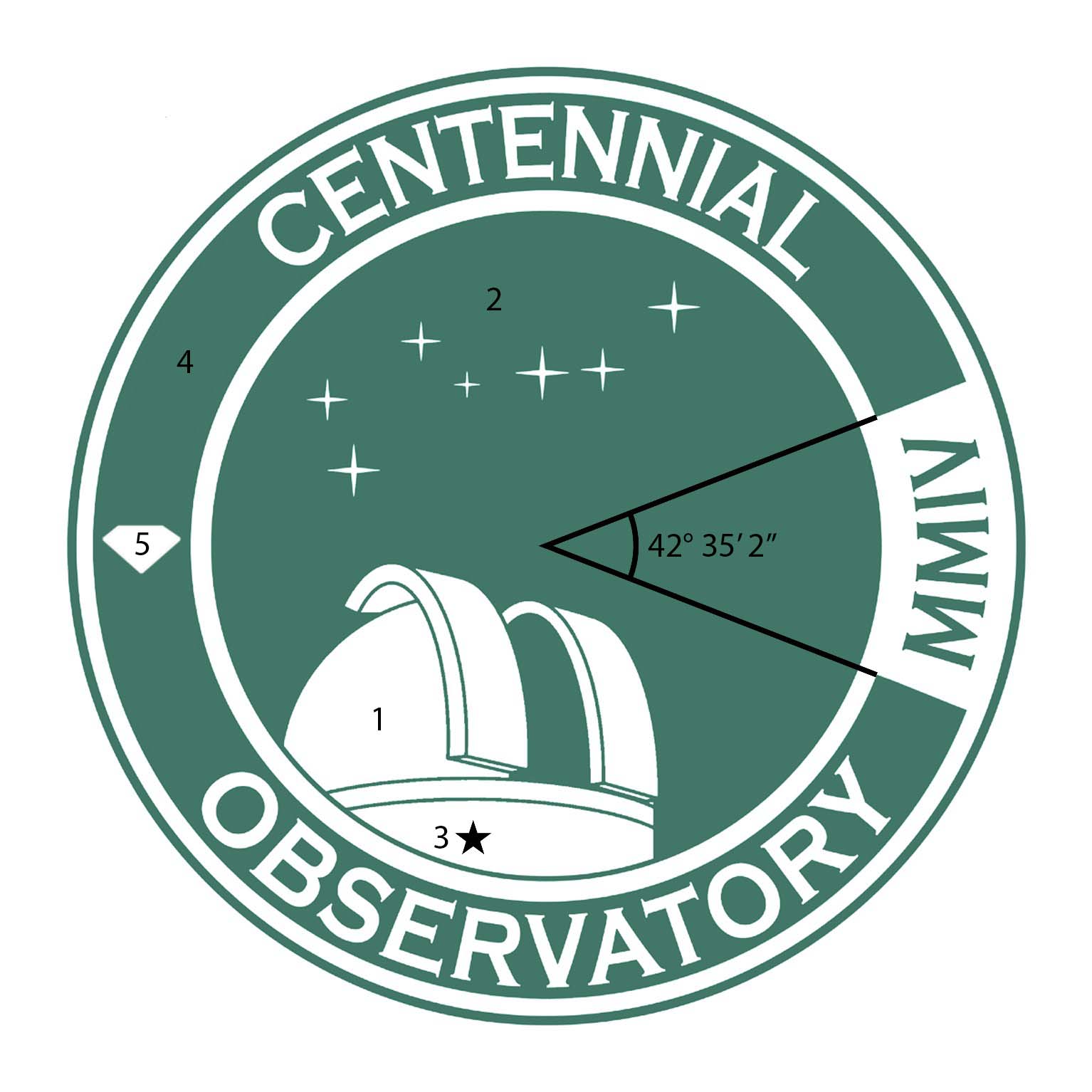The Centennial Observatory's logo, designed by Chris Anderson in May, 2009, incorporates the following symbolic features:
- A stylized depiction of the actual dome, manufactured by Observa-Dome.
- The well-known asterism of the Big Dipper, representing the observatory's mission to be accessible to everyone, not just astronomy enthusiasts.
- The Big Dipper's orientation is shown at it would have appeared at 10 p.m.MDT (the end of evening twilight) on the night of the observatory's official opening (May 22, 2004).
- At the time of the observatory's opening, the distance to Alkaid (Eta Ursae Majoris), the star at the end of the Dipper's handle, was thought to be 100 light years. Thus, the light of Alkaid seen during the observatory's inaugural year would be 100 years old. (Subsequent, more precise distance measurements have refined Alkaid's distance to 103.9 ± 0.8 light years.)
- The Big Dipper's stars are four-pointed, resembling the stars on the most complete, extant depiction of Native American constellations, the Skidi Pawnee Star Chart. This motif symbolizes Norman Herrett's interest in Native American cultures. Each star's size indicates its relative brightness.
- Relative to the Big Dipper, the North Star (Polaris) would be located directly behind the intersection of the (unseen) telescope's polar and declination axes, representing the view visitors have upon approaching the second-floor observatory from ground level.
- The outer, teal semi-circle is a stylized "C":
- Together with the white circle on which it is superimposed (an "O"), represents the Centennial Observatory's initials.
- "C," the Roman numeral for "100," acknowledges that the observatory opened during Twin Falls' centennial year (2004, appearing in Roman numerals at right), and the 100th anniversary year of Norman Herrett's birth.
- As measured from a vertex at the logo's center, the opening angle of the semi-circle "C" is 42° 35' 2", the observatory's latitude.
- The white diamond silhouette symbolizes Norman Herrett's jewelry store which ultimately became the Herrett Museum. Also, after completing a training program and a minimum number of hours of service, Norman Herrett's student teachers would receive a gold pin, inset with a single diamond.
